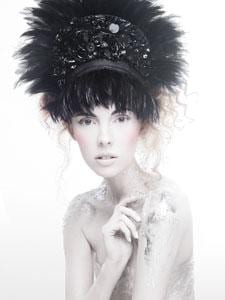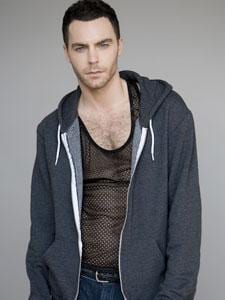
LOST BEAUTY. The Hamish Kippen retrospective continues through October at the Great Hall Gallery. Credit: Hamish Kippen
Long legs, collarbone, vacant eyes and high fashion captured in black and white, matted and printed in an image that tells a tale — not of the girl in the picture but the boy behind the camera.
After completing his last shoot, fashion photographer Hamish Kippen climbed to the rooftop of his apartment building, swallowed a package of over-the-counter sleeping pills and chased them down with a bottle of vodka. He was 21. The rising star left behind award-winning photo spreads in Flare magazine and billboards for the Hudson Bay Company.
A year later Toronto’s Great Hall Gallery houses an exhibition of Kippen’s photography accompanied by a book titled Hamish Kippen. Photographs that were used in magazines such as Flare, Belle and Cheek, along with others from his collection are showcased in both the exhibition and book.
The exhibition was put together by an eclectic group of people close to Kippen who worked to turn a tragedy into an evocative art show. The late photographer’s mother and father, University of Toronto music professors Annette and James Kippen, funded the project in honour of their son’s memory. “We felt that people should know about his work,” says Annette Kippen. “It was a combination of personal reasons as well as purely artistic.”
The couple had supported their son throughout his career, which took off after Kippen won Flare’s Communications Award back in the fall of 2007. “We helped financially to begin with,” says James Kippen. “Then in just any way we could.” From helping their son out with the expense of camera equipment to lending their Chrysler van for him to make it to shoots in New York, they were actively involved in his career and well aware of his talent.
Kippen caught the eye of Ryan Greenwood of Elmer Olsen Model Management when he borrowed models to enter the Flare competition. After quickly developing a great rapport through phone calls and emails, Greenwood began forwarding models to get their test shoots done with the aspiring young photographer. “Hamish had the ability to take a very simple image and create magic around it,” says Greenwood.
Kippen was known for his love of beauty and, because of his youth, was able to connect well with the young models, turning them into muses and starlets before his lens. “He loved the idea of a model,” says Greenwood. “He was super positive and enthusiastic about these kids.”
Despite being able to make magic happen on a shoot, his personal life was less than magical. He wasn’t close to many people and, near the end, suffered from depression — only turning on when at work, according to ex-boyfriend Jefre Nicholls. “Whenever he was working, he was a completely different person,” says Nicholls. “He’d go into a trance — like a machine fuelled by diet Pepsi.”
The couple began dating as Kippen’s career was taking off and though Nicholls was involved in his professional life, he called it quits after nine months once he realized Kippen couldn’t give him the relationship he wanted.
Still, in his last days, it was to Nicholls Kippen turned to in his battling with deep depression. After his first attempt with sleeping pills in September 2008, Nicholls moved in with him full time.
After his death on Oct 21, 2008 Nicholls was one of the first to get involved in the exhibition and book project. “It’s been a way for me to hold onto him,” says Nicholls. He, the family, Greenwood and others, including Peter Miniaci the curator of the exhibition, began meeting monthly to put together the show — a cathartic process for everyone involved.
Kippen kept much of his struggle a secret from various family members; it was close friends who tried to keep an eye on him during the worst periods. He had confided to his mother about his mental state and his sister had found his prescriptions, but no one in the family thought he’d take his own life.
Kippen’s father has had to confront these different versions of his son over the last year.
“Don’t ever ask parents,” says James Kippen, “because parents have an idea of what their kids are like. And whatever their kids do, parents somehow make it fit that.
“I think he was a very different person when he wasn’t with us.”
As the first anniversary of Hamish Kippen’s death approaches, at least his eye and his talent are in full view.

 Why you can trust Xtra
Why you can trust Xtra


